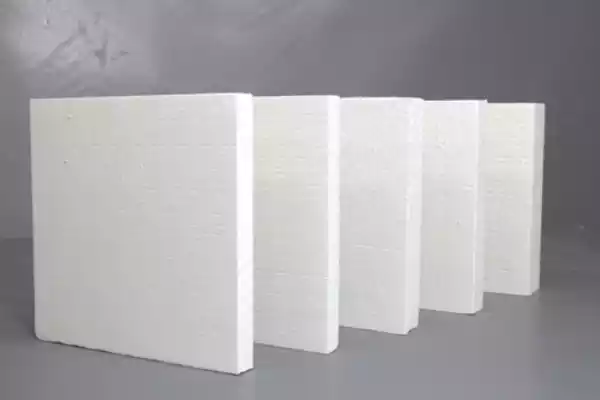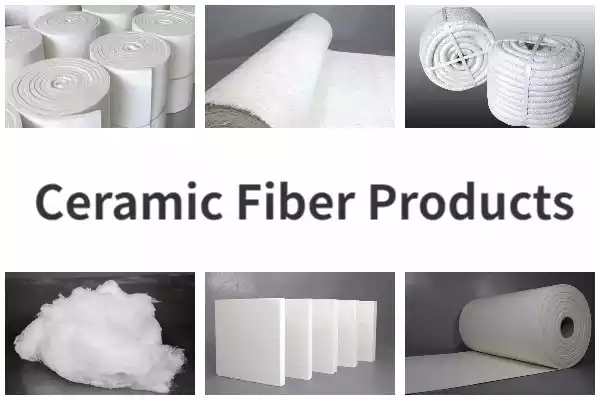ケイ酸アルミニウムセラミックファイバーボードの応用
アルミニウムケイ酸塩セラミック繊維ボードはaです ファイバーボード 断熱に使用され、加熱下でも良好な機械的強度を維持できます.
セラミック繊維とは何ですか?
セラミックファイバー ケイ酸アルミニウムとしても知られています, 光のある繊維状の軽量の難治性材料です, 高温耐性, 熱伝導率が低い, ミニチュアの熱融解.
セラミックファイバーボードの生産原則
繊維は、セラミックファイバーボードの原料として使用されます, バインダーとフィラーレベルの添加物の一定の割合が追加されています, そして、それはビーターを通してスラリーミキシングタンクのスラリーに完全に分散しています. 形成プールにポンプを入れて、圧縮空気でかき混ぜます. 型を形成タンクに入れます, 真空の原理を使用して、金型に繊維のスラリーを吸着させます.
吸着時間を正確に制御します, 真空は湿った繊維材料を脱水します, 型を取り外します, トレイに置きます, 乾燥オーブンに送ってください 10-24 時間. 乾燥繊維ボードはグラインダーとエッジトリマーを通過してサイズを正確に制御します. したがって、セラミックファイバーボードのサイズをカスタマイズできます.
セラミックファイバーボードのプロパティ

対応するゆるいセラミックファイバーコットンの優れた性能に加えて, セラミックファイバーボードにはハードテクスチャーがあります, 優れたタフネス, と強さ, そして優れた風の侵食抵抗. 加熱しても膨張しません, 軽量です, 建設に便利な, そして、カットして自由に曲がることができます. それは、kiの理想的な省エネ材です, パイプライン, その他の断熱装置.
アルミニウムケイ酸塩セラミック繊維ボードの利点
- 高い圧縮強度と長寿命.
- 熱容量が低い, 熱伝導率が低い.
- 非脆性材料, 良好な靭性.
- 正確な寸法と良好な平面度.
- カットと取り付けが簡単, 建設に便利.
- 優れた風の侵食抵抗.
- 継続的な生産, 均一な繊維分布, 安定したパフォーマンス.
- 低熱容量と熱伝導率が低い非脆性材料.
- 良好な弾力性, 風の侵食抵抗, そして長いサービスライフ.
- 高い熱安定性, 強い耐熱衝撃性, そして、優れた縞模様のパフォーマンス.
セラミックファイバーアプリケーション業界

炉の裏地として使用されます, 熱絶縁, 伸縮継手, 熱分離, 鋼の各温度ゾーンの防火, 冶金, 石油, 化学, セラミック機械, 非鉄金属, ガラス, その他の工業用キルン.
一般的なセラミック断熱材は何ですか?

一般的なセラミック断熱材が含まれます セラミックファイバーブランケット, セラミックファイバーロープ, セラミックファイバーペーパー, と セラミックファイバークロス. 使用法に応じて、さまざまなセラミック断熱製品が使用されます.
セラミック繊維製品を使用するための注意事項
安全な操作
インストール時, 使用, セラミック断熱製品の維持, 関連する安全性の手順と使用ガイドラインに従ってください.
温度制限
選択したセラミック断熱製品が必要な動作温度範囲に対応できることを確認してください. 温度範囲を超えると、材料の故障またはパフォーマンスが低下する可能性があります.
インストール品質
正しいインストールは、セラミック断熱製品の性能を確保するための鍵です. 耐火性メーカーが提供するインストールガイドラインに従ってインストールし、適切な留置を確保する, 封印, とサポート. 断熱性の連続性と断熱性を確保するためにボイドやギャップを作成しないでください.
メンテナンス検査
セラミック断熱製品の状態を定期的に検査します, ダメージを含む, 腐食または老化. 問題が見つかった場合, 通常の熱断熱性能を確保するために、修理または交換の対策を講じる必要があります.
環境適応性
セラミック断熱繊維製品は、実際の作業環境の要件を満たす材料と種類を選択する必要があります. 化学腐食を検討します, 機械的振動, ガス侵食, およびその他の要因, 耐久性と適応性が高い製品を選択します.
熱膨張
セラミック断熱材の熱膨張係数と基礎となる構造は一致するはずです. 適切な熱膨張制御は、熱ストレスと亀裂のリスクを減らすことができます.
耐火性
セラミック繊維製品の耐火性は、高温産業環境にとって重要です. 選択した製品が関連する耐火性基準に準拠し、機器を保護し、仕事の安全性を向上させるのに十分な耐火性があることを確認してください.
 栄勝耐火物工場
栄勝耐火物工場
微信
wechatでQRコードをスキャンしてください